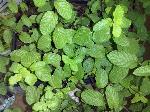The peppermint Mentha piperita essential oil in the died of tambaqui Colossoma macropomum promotes immunostimulating action, allowing the maintenance of the health of cultivated fish even in stressful conditions

Juvenile tambaqui Colossoma macropomum used in the evaluation of health condition in the experiment with peppermint essential oil
The management of fish in a fish farm can cause stress and lead to disease and even death, resulting in loss of production and profit for fish farmers. To address this problem, problem, essential oil of peppermint was used to feed juvenile tambaqui and to test the immunostimulatory potential in maintaining the health of this fish. Thus, the oil was included in the levels 0.5%, 1.0% and 1.5% / kg of commercial diet for fish, feeding them for 30 days. Blood collection for hematological and biochemical analyzes were performed and the fish sacrificed for collection of liver, kidney and gills. The remaining tambaquis were challenged by intraperitoneal inoculation with bacteria (Aeromonas hydrophila).
The results indicated an immunostimulatory potential due to the maintenance of the glycemic levels (without fish stress) and to the increase of plasma protein and albumin levels related to the improvement of nonspecific immune response in fish. The number of leukocytes and lymphocytes, after bacterial challenge, decreased in fish that received diets with peppermint oil, due to the migration of these cells from the bloodstream to the tissues.

The oil of peppermint in the diets did not increase the activity of the lysozyme nor did it increase the number of leukocytes of the tambaquis, however the abundance of parasites (monogeneas) in the gills decreased when fed with 0.5 and 1.0% of the oil, being the effect anti-helminths of about 12 times greater with the use of 1.0%. The use of natural substances such as oil, instead of chemicals such as formalin, copper sulphate, mebendazole, among others, reduce the environmental impact, residual levels in fish and toxicity, and lower the costs for fish farmers. Thus, the use of 1.0% of essential oil of M. piperita per kg of diet for tambaqui feeding for 30 days can be recommended.
1 RIBEIRO, SUZANA CARDOSO; MALHEIROS, DAYNA FILOCREÃO; GUILOSKI, IZONETE CRISTINA; MAJOLO, CLAUDIA; CHAVES, FRANCISCO CÉLIO MAIA; CHAGAS, EDSANDRA CAMPOS; SILVA DE ASSIS, HELENA CRISTINA; TAVARES-DIAS, MARCOS; YOSHIOKA, ELIANE TIE OBA. 2018. Antioxidants effects and resistance against pathogens of Colossoma macropomum (Serassalmidae) fed Mentha piperita essential oil. AQUACULTURE, v. 490, p. 29-34. https://www.embrapa.br/busca-de-publicacoes/-/publicacao/1088207/antioxidants-effects-and-resistance-against-pathogens-of-colossoma-macropomum-serassalmidae-fed-mentha-piperita-essential-oil
2 RIBEIRO, S.C., CASTELO, A.S., DA SILVA, B.M.P., CUNHA, A.S., PROIETTI JÚNIOR, A.A., OBA-YOSHIOKA, E.T. 2016. Hematological responses of tambaqui Colossoma macropomum (Serrassalmidae) fed with diets supplemented with essential oil from Mentha piperita (Lamiaceae) and challenged with Aeromonas hydrophila. Acta Amazonica, vol.46, no.1, p. 99-105. https://www.embrapa.br/busca-de-publicacoes/-/publicacao/1043236/hematological-responses-of-tambaqui-colossoma-macropomum-serrassalmidae-fed-with-diets-supplemented-with-essential-oil-from-mentha-piperita-lamiaceae-and-challenged-with-aeromonas-hydrophila